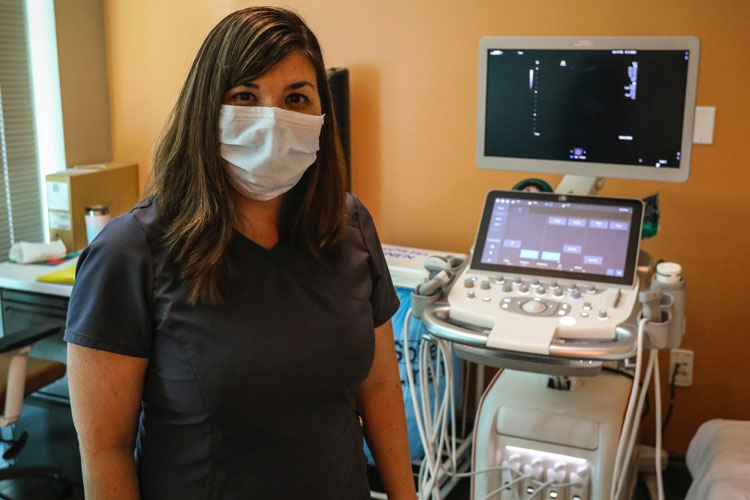This post is also available in:
![]() Español (Spanish)
Español (Spanish) ![]() Français (French)
Français (French)
What is an abdominal ultrasound?
An abdominal ultrasound is a non-invasive test that uses sound waves to take images inside the body. An abdominal ultrasound can examine the liver, spleen, appendix, pancreas, gallbladder, kidneys, bladder, intestines, and/or stomach.
An abdominal ultrasound is safe and painless. It does not require your child to receive any sedation or radiation.
Why might a child need an abdominal ultrasound?
Based on your child’s history and physical examination, your healthcare provider will determine the need to image your child’s abdomen. Symptoms of abdominal pain, a swollen belly (called abdominal distention), abnormal laboratory tests, or vomiting are some reasons why your provider may order an abdominal ultrasound.
How is an abdominal ultrasound performed?
An abdominal ultrasound is performed by a radiology department. It can be completed as an outpatient procedure, at a radiology center, and even at the bedside if your child is in the hospital. It is usually performed with the child laying down flat on their back. However, your child may also be asked to move in other positions to better look at the abdominal organs.
The ultrasound technician (called a sonographer) will place a warm gel either on your child’s abdomen or on a wand that they will move around your child’s abdomen. There should be no pain during the ultrasound; however, if your child is very sensitive in a specific area of the abdomen, they may feel some pressure or discomfort when that area is examined.
What happens before an abdominal ultrasound?
Your child may be asked to put on a gown for the test. Depending on the reason for the ultrasound, your child may have to restrict their eating or drinking before the ultrasound. This can include a special diet or fasting for a few hours before the ultrasound. Your healthcare provider or radiology department will be able to provide you with specific instructions before your appointment.
What happens after an abdominal ultrasound?
Your child should be able to return home immediately after the ultrasound, unless they are receiving a bedside ultrasound as part of a hospital stay. In the outpatient setting, the sonographer may be able to give you the results of the test immediately, or they may review the results with your medical provider before contacting you.
What are the risks of an abdominal ultrasound?
An ultrasound is a very safe test. Sometimes, if there is too much gas in the abdomen, it may be difficult to see certain organs. Your medical provider or the radiologist will determine if any further testing or treatment is needed after your child’s abdominal ultrasound.
When should we seek medical advice?
If your child has a sudden change in their health, contact your provider or go to a local emergency room as soon as possible. Sudden changes include dehydration, seizures, significant vomiting, or acute severe pain.
References
Up to Date, 2019
Gale, H. I., Gee, M. S., Westra, S. J., & Nimkin, K. (2016). Abdominal ultrasonography of the pediatric gastrointestinal tract. World Journal of Radiology, 8(7), 656–667. doi:10.4329/wjr.v8.i7.656
Authors: L. Hauptman, CPNP; E. Burch, CPNP; K. Rowell, FNP
February 2022
This post is also available in:
![]() Español (Spanish)
Español (Spanish) ![]() Français (French)
Français (French)






